Effects of Coordination Ability of Nitrogen-Containing Carboxylic Acid Ligands on Nieuwland Catalyst
Abstract
:1. Introduction
2. Results and Discussions
2.1. Catalytic Activities of NC and N-NC
2.2. Compositions of the Crystals
2.3. The Ligands Coordination Ability Analysis
2.4. Correlation between the Amount of Copper (I) and Catalytic Activity
3. Experimental Section
3.1. Materials and Catalyst Preparation
3.2. The Dimerization Reaction of C2H2
3.3. Catalyst Performance Evaluation
3.4. Separation of Crystal from the Catalyst Solution
3.5. Treatment of the Used Catalyst Solutions
3.6. Catalyst Characterization
4. Conclusions
Author Contributions
Acknowledgments
Conflicts of Interest
References
- Rattanasom, N.; Kueseng, P.; Deeprasertkul, C. Improvement of the mechanical and thermal properties of silica-filled polychloroprene vulcanizates prepared from latex system. Appl. Polym. Sci. 2012, 124, 2657–2668. [Google Scholar] [CrossRef]
- Ismail, H.; Leong, H.C. Curing characteristics and mechanical properties of natural rubber/chloroprene rubber and epoxidized natural rubber/chloroprene rubber blends. Polym. Test. 2001, 20, 509–516. [Google Scholar] [CrossRef]
- Liu, J.G.; Han, M.H.; Zuo, Y.Z.; Wang, Z.W. Research progress of dimerization of C2H2 to monovinylacetylene. Chem. Ind. Eng. Prog. (Huagong Jinzhan) 2011, 30, 942–947. [Google Scholar] [CrossRef]
- Nieuwland, J.A.; Vogt, R.R. Catalyst and Process of Employing Same. US Patent 1926055A, 12 September 1930. [Google Scholar]
- Nieuwland, J.A.; Calcott, W.S.; Downing, F.B.; Carter, A.S. Acetylene polymers and their derivatives. I. the controlled polymerization of acetylene. J. Am. Chem. Soc. 1931, 53, 4197–4202. [Google Scholar] [CrossRef]
- Trotus, I.T.; Zimmermann, T.; Schuth, F. Catalytic reactions of acetylene: A feedstock for the chemical industry revisited. Chem. Rev. 2014, 114, 1761–1782. [Google Scholar] [CrossRef] [PubMed]
- Liu, J.G.; Zuo, Y.Z.; Han, M.H.; Wang, Z.W.; Wang, D.Z. Stability improvement of the Nieuwland catalyst in the dimerization of acetylene to monovinylacetylene. J. Nat. Gas. Chem. 2012, 21, 495–500. [Google Scholar] [CrossRef]
- Tachiyama, T.; Yoshida, M.; Aoyagia, T.; Fukuzumi, S. Mechanistic study on dimerization of acetylene with a Nieuwland catalyst. Appl. Organomet. Chem. 2008, 22, 205–210. [Google Scholar] [CrossRef]
- Liu, Z.H.; Yu, Y.L.; Tao, C.Y.; Du, J.; Liu, R.L.; Fan, X.; Peng, M.; Sun, D.G.; Zuo, Z.H.; Ma, J.X.; Xie, Z.M.; Li, Z.Q. A Method of Dimerization of C2H2 to Monovinylacetylene. CN Patent 102775266 A, 14 November 2012. [Google Scholar]
- Han, M.H.; Liu, J.G.; Zuo, Y.Z.; Wang, Z.W. The Method and Application of Anhydrous Nieuwland Catalyst during Dimerization of C2H2. CN Patent 103285925 A, 11 September 2013. [Google Scholar]
- Liu, Z.H.; Yu, Y.L.; Tao, C.Y.; Du, J.; Liu, R.L.; Fan, X.; Peng, M.; Sun, D.G.; Zuo, Z.H.; Ma, J.X. A Method of Synthesizing Monovinylacetylene in Aqueous Solution. CN Patent 102731241 A, 17 October 2012. [Google Scholar]
- Liu, Z.H.; Yu, Y.L.; Du, J.; Fan, X.; Tao, C.Y. Acetylene dimerization catalyzed by LaCl3-modified Nieuwland catalyst. CIESC J. 2014, 65, 1260–1266. [Google Scholar] [CrossRef]
- Du, J.; Liu, Z.H.; Tao, C.Y. A Method of Synthesizing Monovinylacetylene. CN Patent 102964198 A, 13 March 2013. [Google Scholar]
- Zhang, Y.K.; Jia, Z.K.; Zhen, B.; Han, M.H. Acetylene dimerization catalyzed by Nieuwland catalyst. CIESC J. 2016, 67, 294–299. [Google Scholar] [CrossRef]
- Lu, J.L.; Xie, J.W.; Liu, H.Y.; Liu, P.; Liu, Z.Y.; Dai, B. Strontium chloride modified Nieuwland catalyst in the dimerization of acetylene to monovinylacetylene. Asian J. Chem. 2014, 26, 8211–8214. [Google Scholar] [CrossRef]
- Lu, J.L.; Liu, H.Y.; Xie, J.W.; Liu, P.; Liu, Z.Y.; Dai, B. Study on catalytic activity of zinc(II)-copper(I) collaborative bimetallic catalysis in acetylene dimerization reaction. J. Shihezi Univ. 2014, 32, 213–217. [Google Scholar] [CrossRef]
- Lu, J.L.; Liu, H.Y.; Xie, J.W.; Liu, P.; Dai, B.; Liu, Z.Y. Effect of polyethylene glycol/Nieuwland catalyst on C2H2 dimerization reaction. Chem. Eng. 2015, 43, 60–64. [Google Scholar] [CrossRef]
- Liu, J.; Han, M.; Wang, Z. Effect of solvent on catalytic performance of anhydrous catalyst in acetylene dimerization to monovinylacetylene. J. Energy Chem. 2013, 22, 599–604. [Google Scholar] [CrossRef]
- You, Y.H.; Luo, J.; Xie, J.W.; Dai, B. Effect of iminodiacetic acid-modified Nieuwland catalyst on the C2H2 dimerization reaction. Catalysts 2017, 7, 394. [Google Scholar] [CrossRef]
- Liu, H.Y.; Xie, J.W.; Liu, P.; Dai, B. Effect of Cu+/Cu2+ Ratio on the Catalytic Behavior of Anhydrous Nieuwland Catalyst during Dimerization of C2H2. Catalysts 2016, 6, 120. [Google Scholar] [CrossRef]

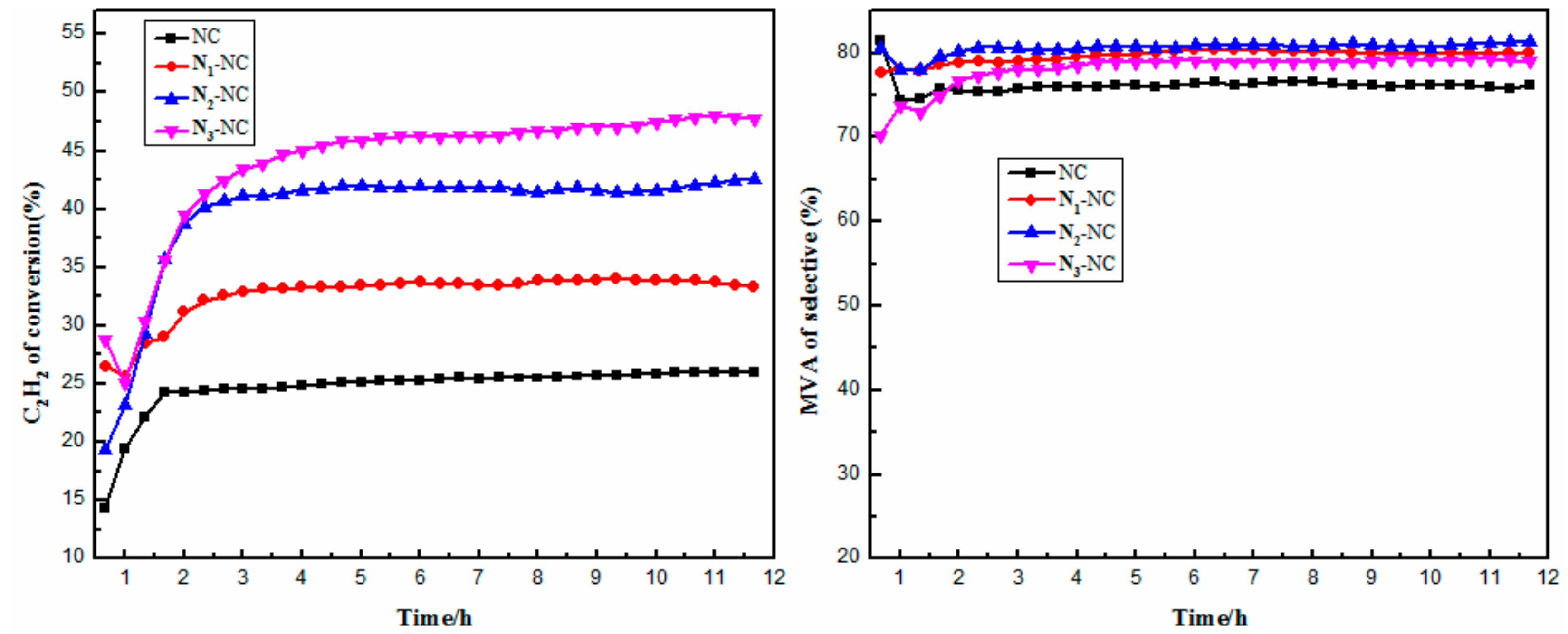
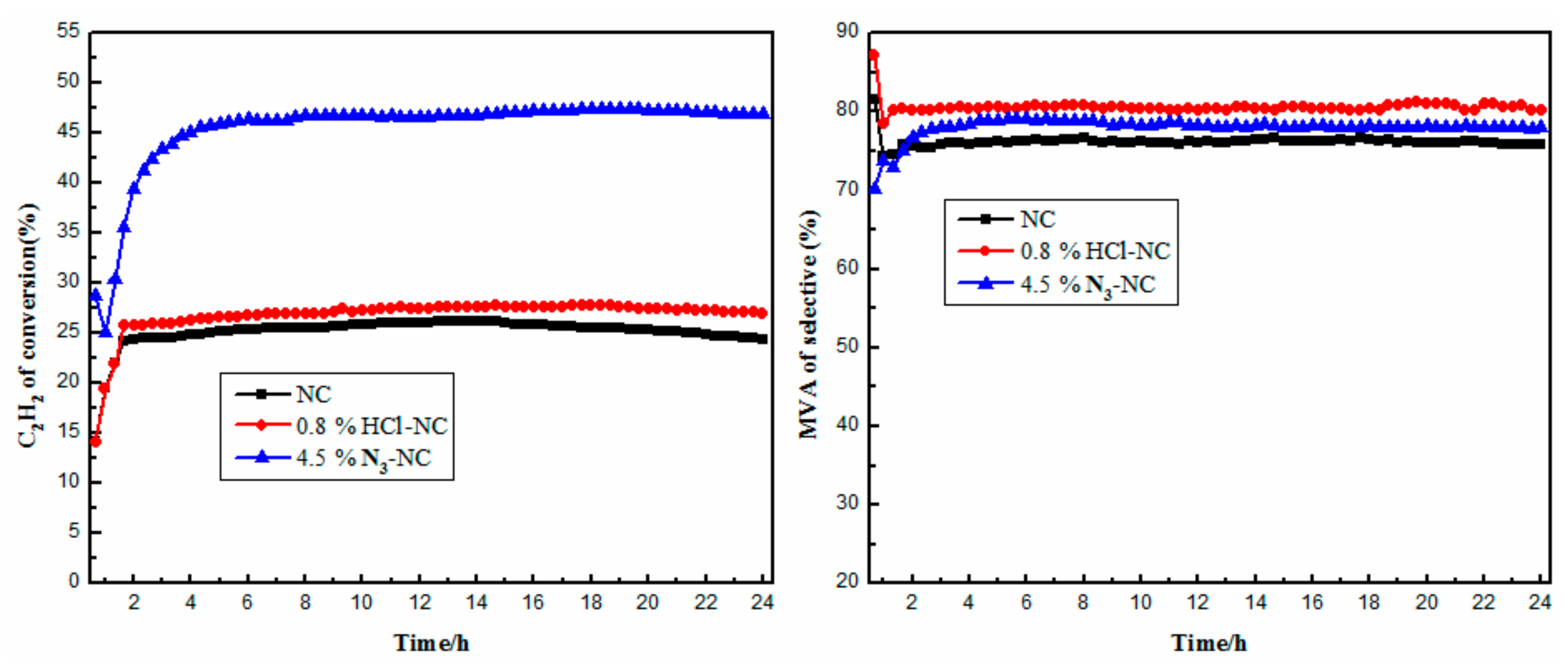
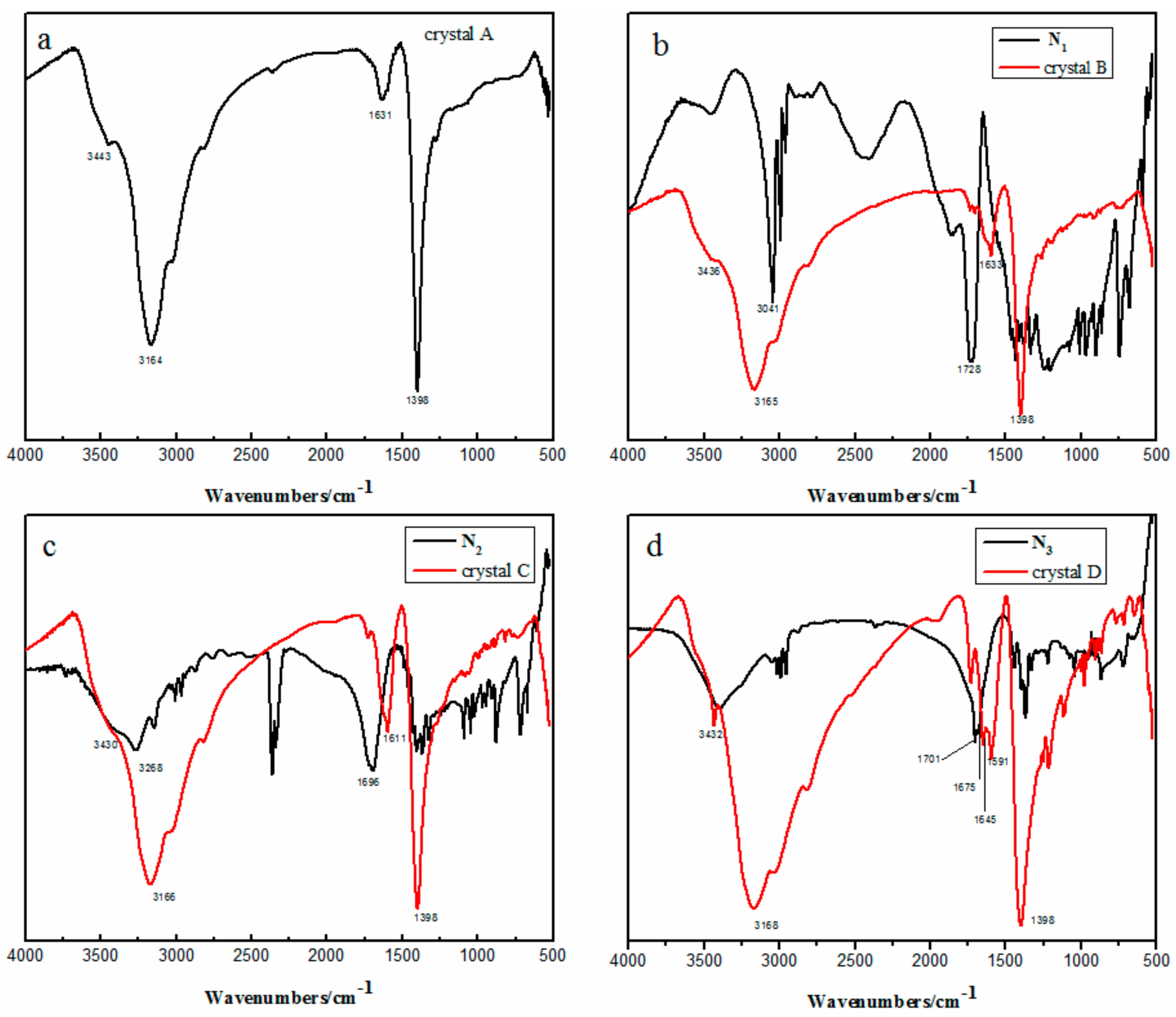
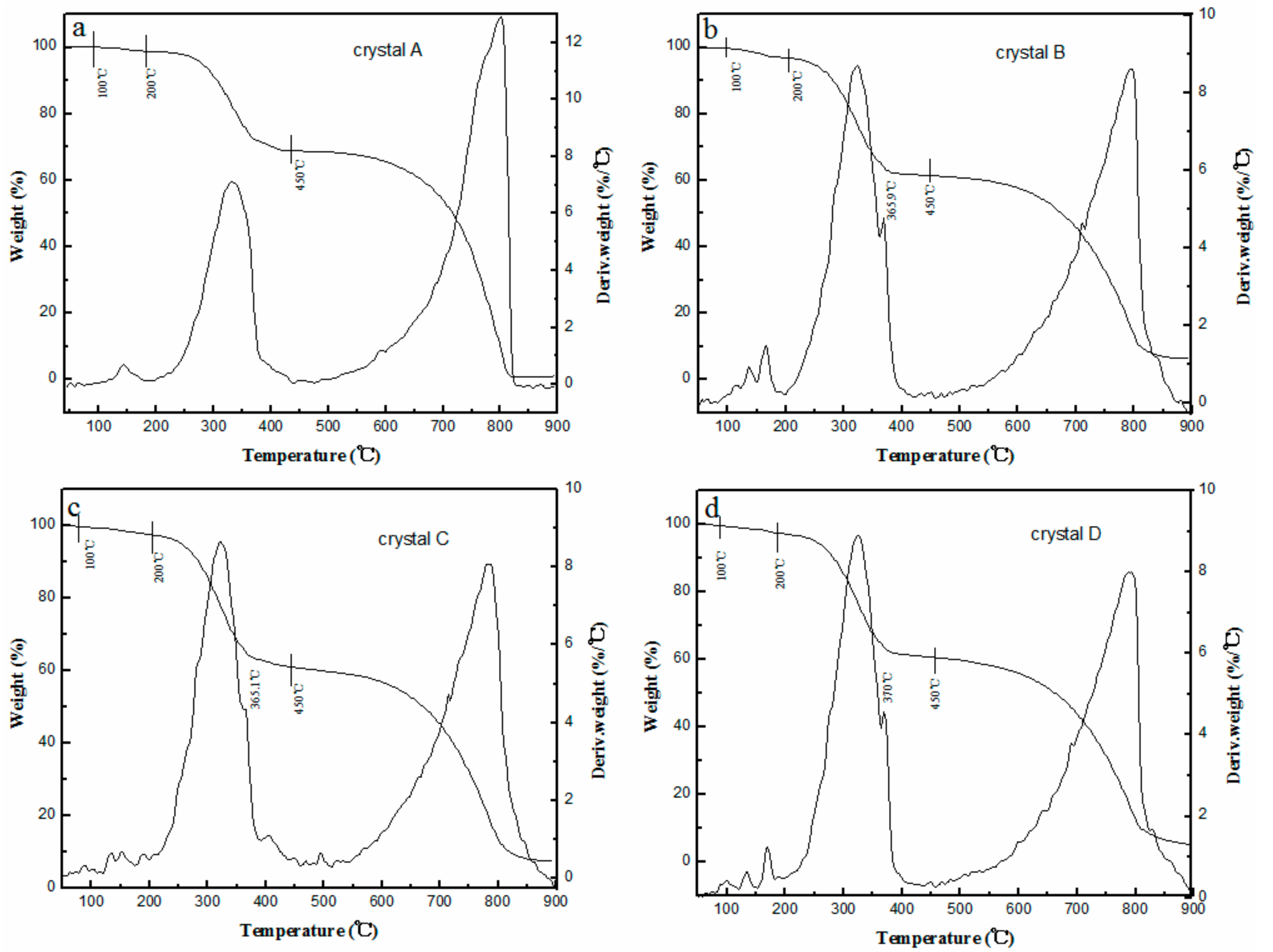
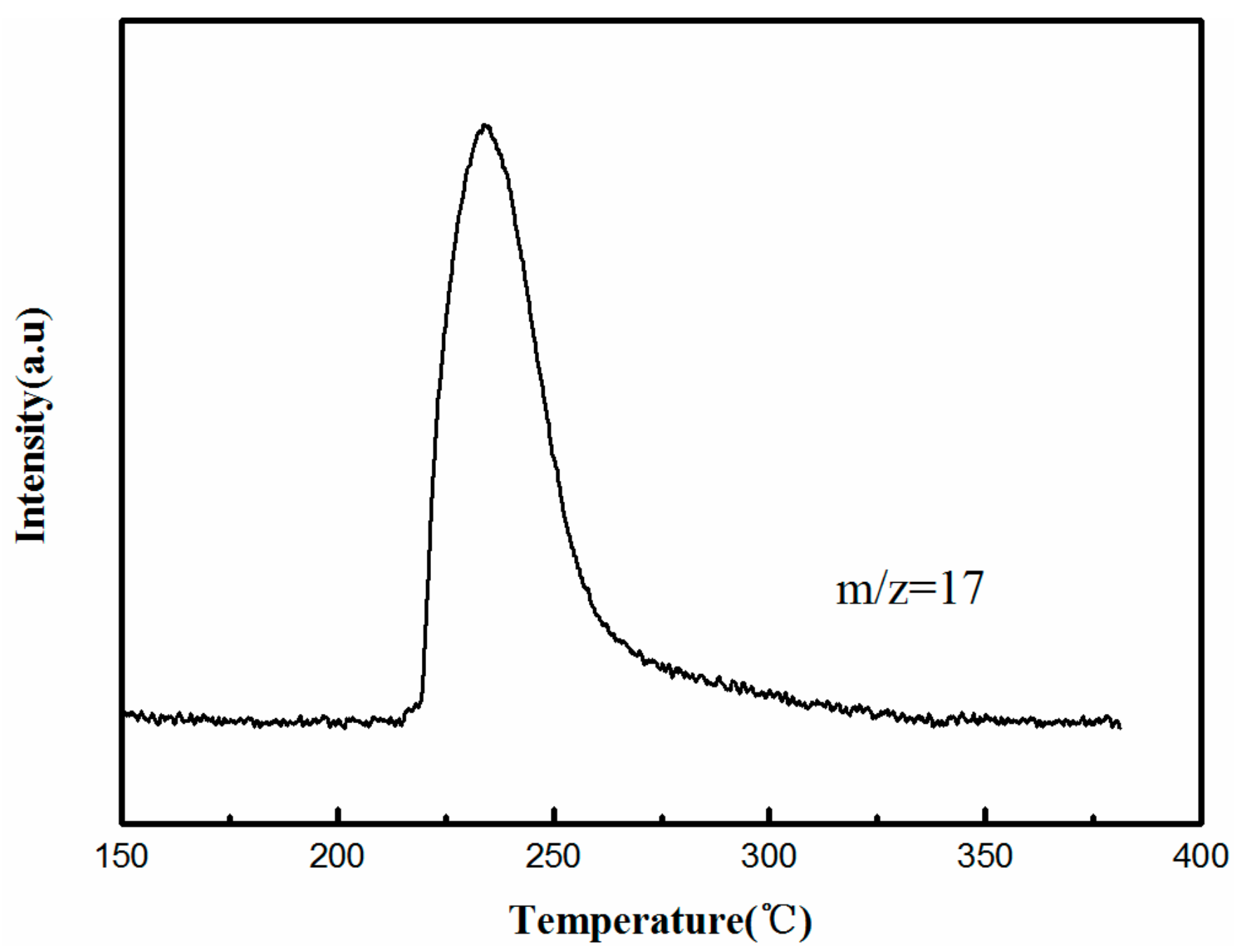
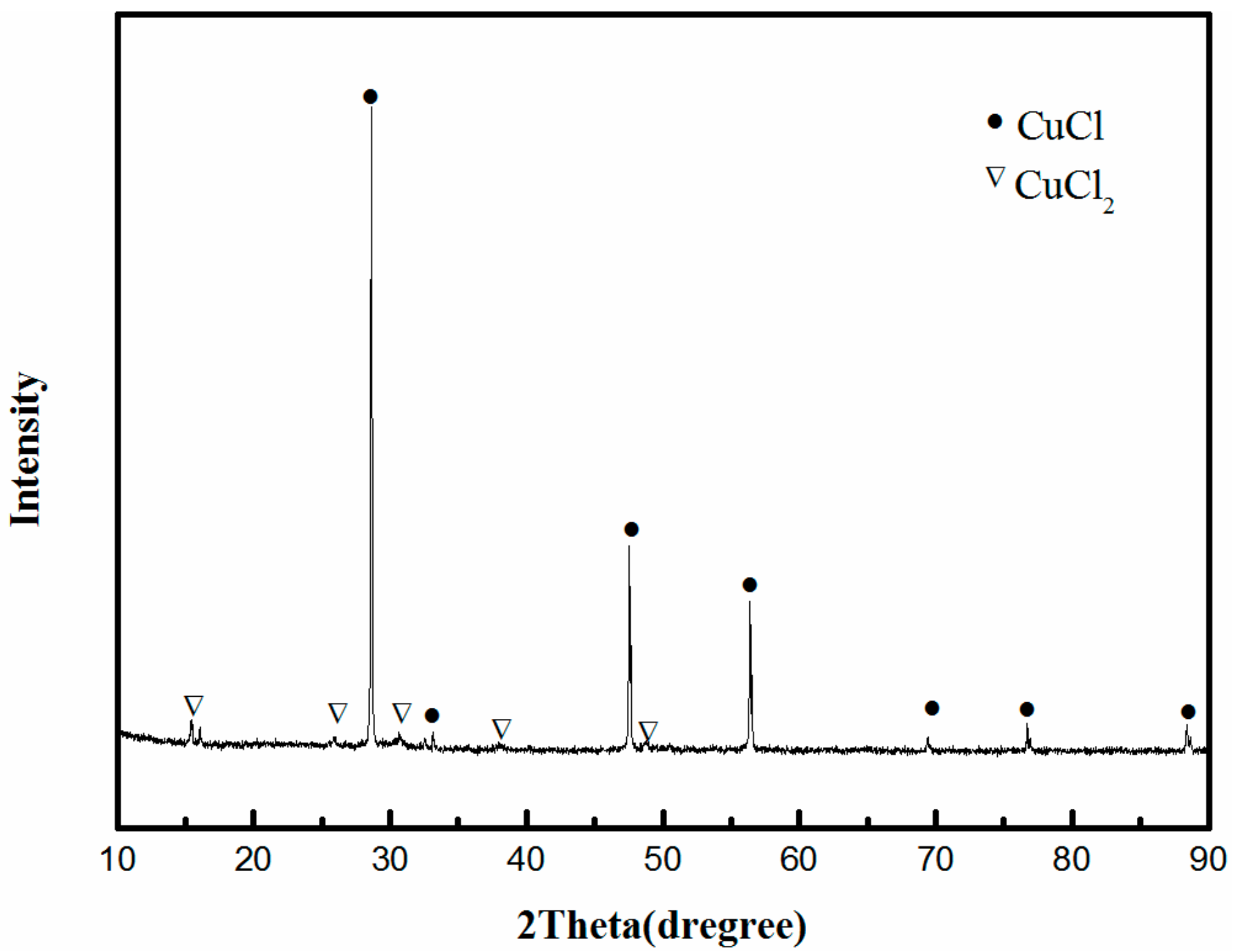
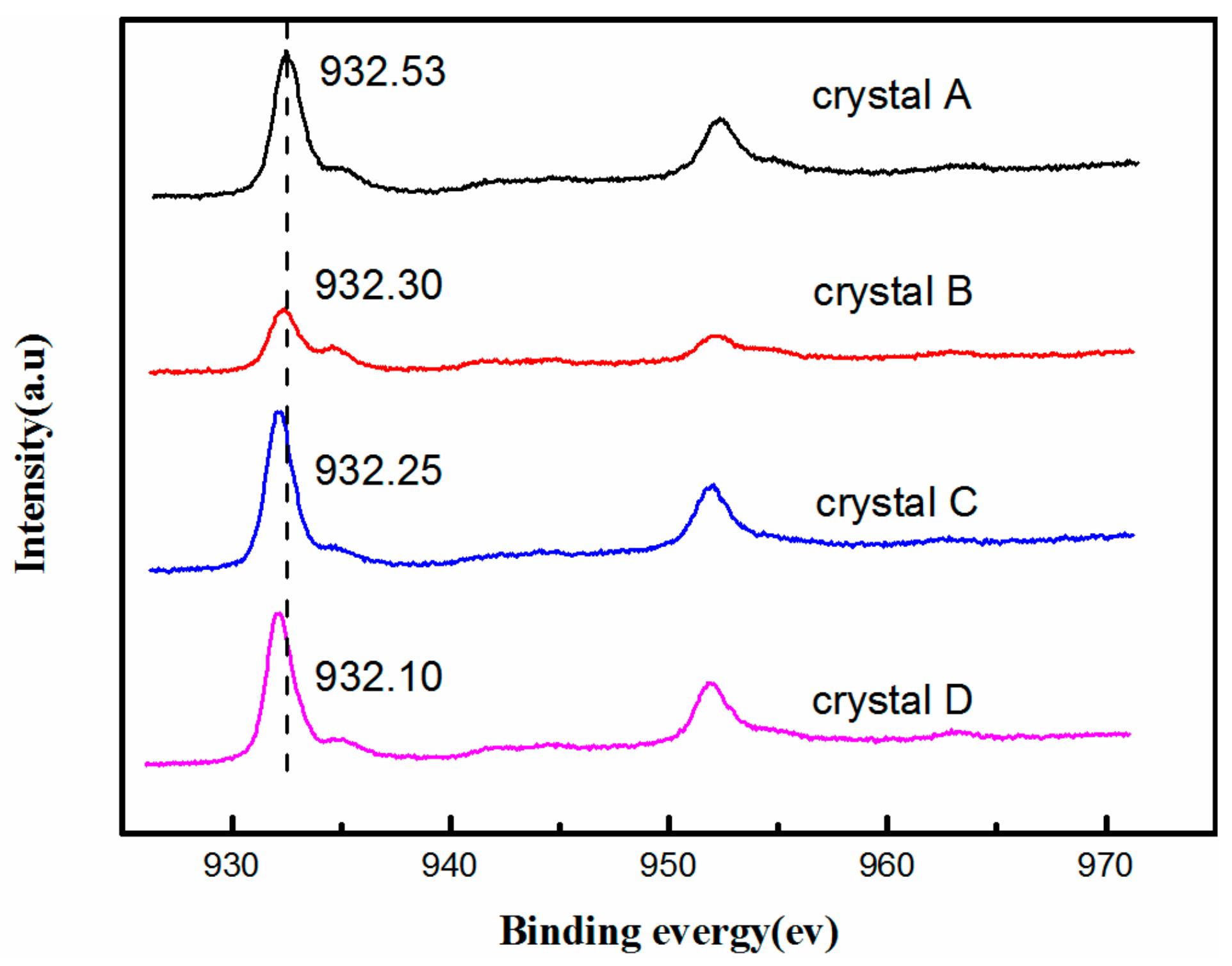
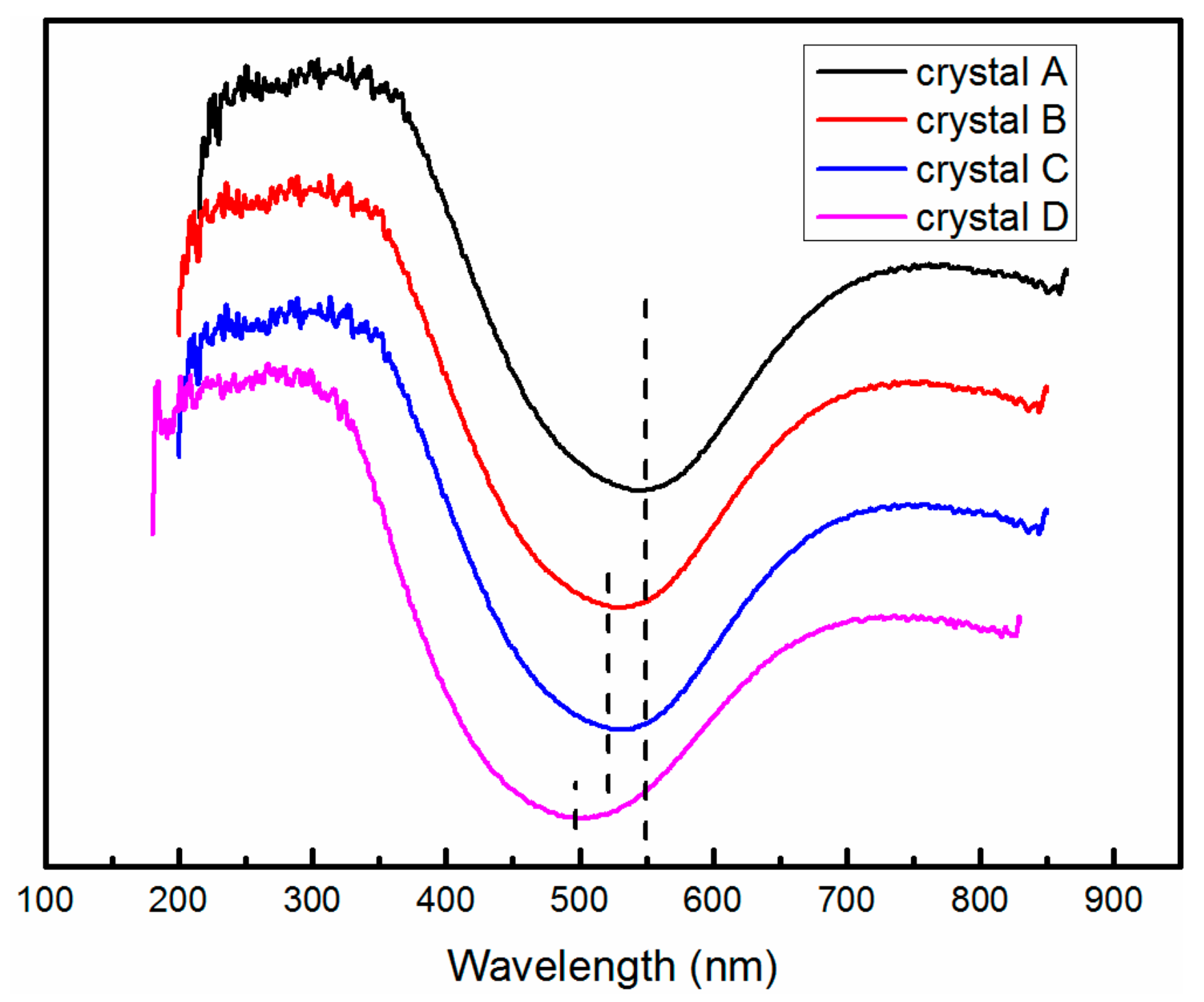
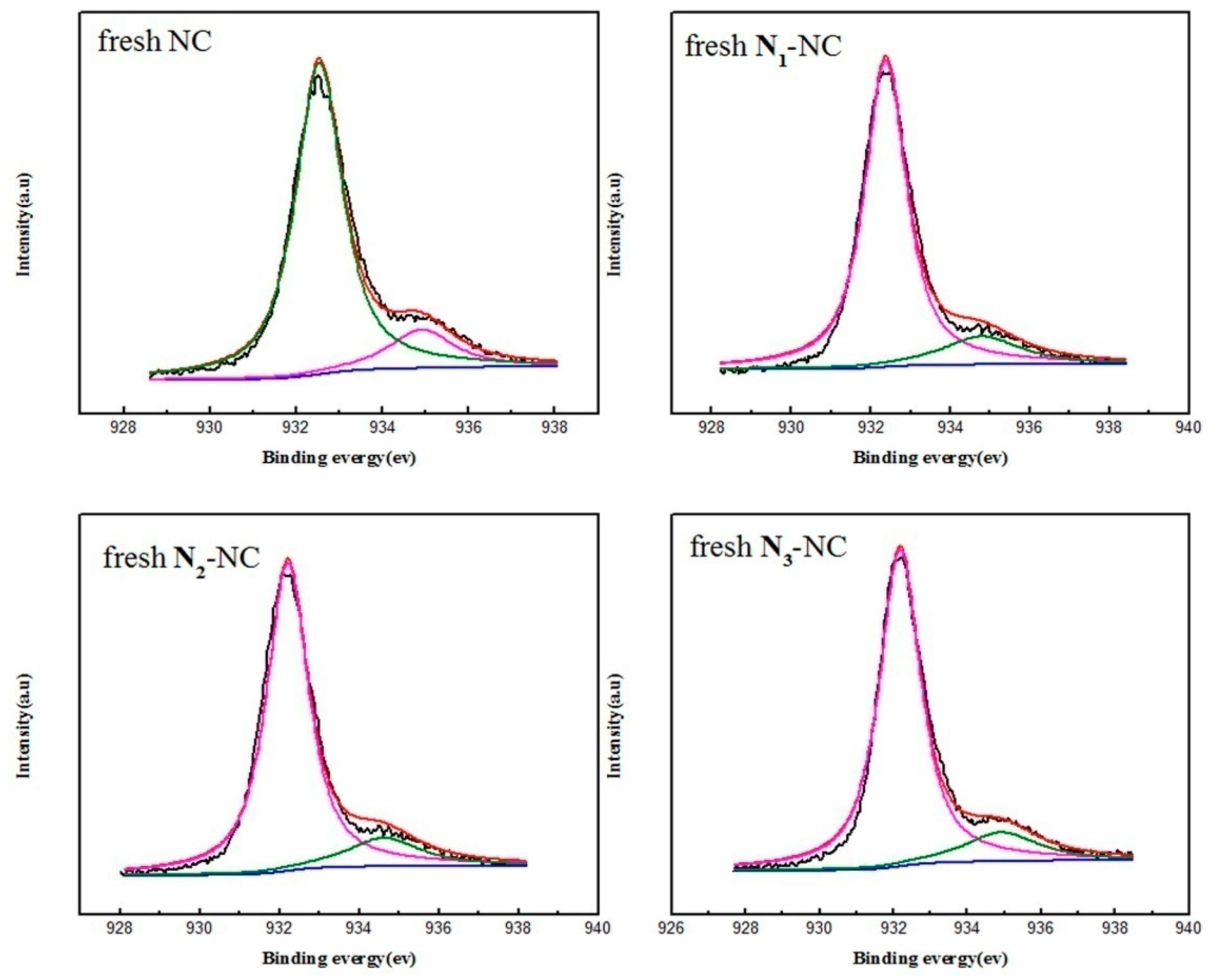
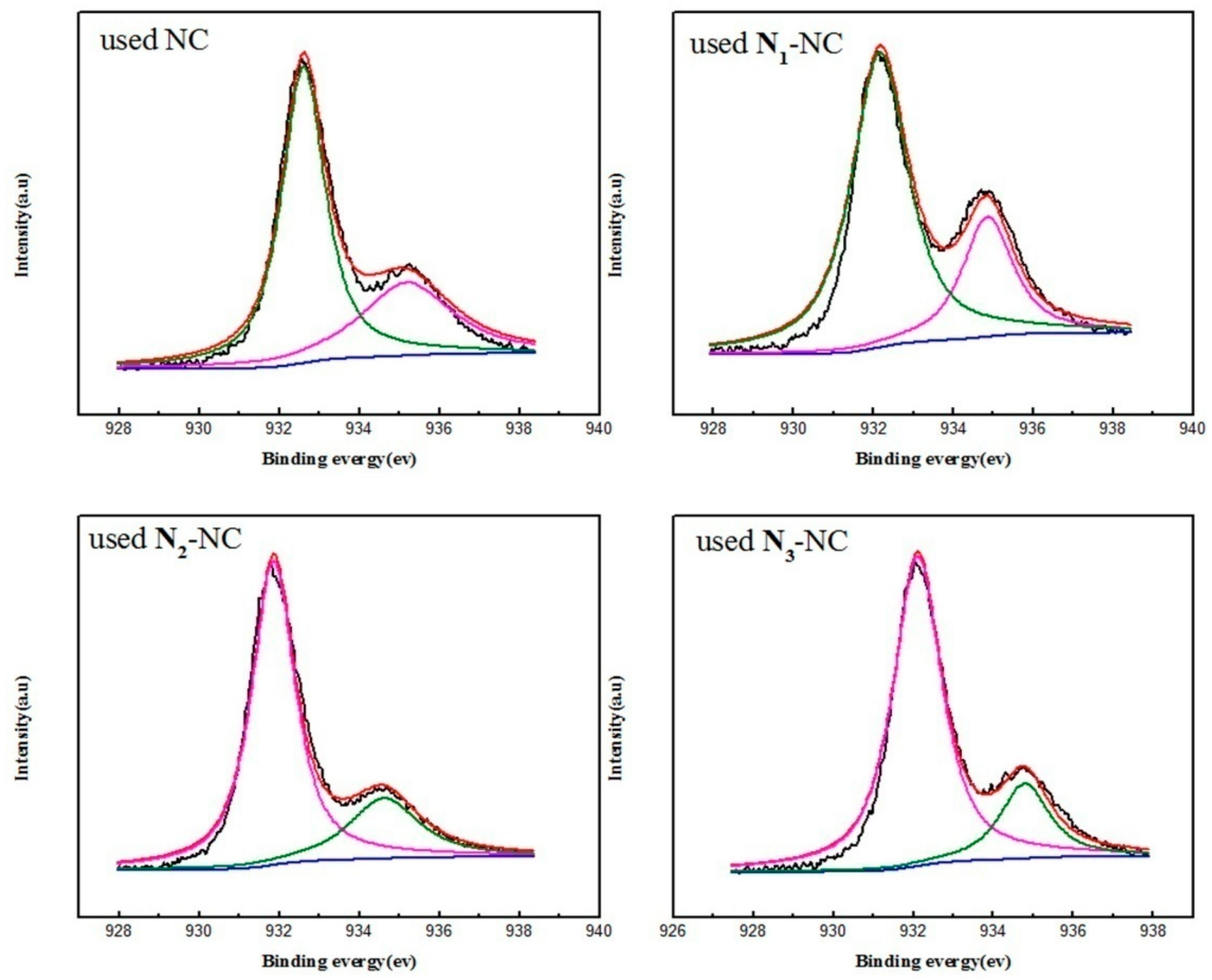



| Catalysts | C2H2 Conversion (%) | MVA Selectivity (%) | Yield (%) |
|---|---|---|---|
| NC | 25.5 | 76.1 | 19.4 |
| N1-NC | 33.6 | 79.6 | 26.7 |
| N2-NC | 41.6 | 80.6 | 33.5 |
| N3-NC | 46.7 | 78.1 | 36.5 |
| Catalysts | C2H2 Conversion (%) | MVA Selectivity (%) | Yield (%) |
|---|---|---|---|
| NC | 25.5 | 76.1 | 19.4 |
| 0.8% HCl-NC | 27.2 | 80.5 | 21.9 |
| 4.5% N3-NC | 46.9 | 78.3 | 36.7 |
| Catalysts | The First (%) | The Second (%) | The Third (%) | The Fourth (%) |
|---|---|---|---|---|
| crystal A | 0.28 | 30.04 | 0 | 69.68 |
| crystal B | 2.81 | 31.21 | 4.86 | 54.18 |
| crystal C | 1.89 | 31.72 | 6.44 | 52.13 |
| crystal D | 2.23 | 31.70 | 5.70 | 54.56 |
| Catalysts | Area%, Binding Energy (eV) | |||
|---|---|---|---|---|
| Cu+ | Cu2+ | |||
| Fresh | Used | Fresh | Used | |
| NC | 85.38(932.54) | 66.03(932.56) | 14.62(934.90) | 33.97(934.98) |
| N1-NC | 85.34(932.35) | 73.05(932.31) | 14.66(934.75) | 26.95(934.69) |
| N2-NC | 85.97(932.22) | 75.53(932.15) | 14.03(934.61) | 24.47(934.58) |
| N3-NC | 85.94(932.10) | 80.14(932.01) | 14.06(934.50) | 19.86(934.50) |
© 2018 by the authors. Licensee MDPI, Basel, Switzerland. This article is an open access article distributed under the terms and conditions of the Creative Commons Attribution (CC BY) license (http://creativecommons.org/licenses/by/4.0/).
Share and Cite
You, Y.; Luo, J.; Xie, J.; Zhang, J.; Dai, B. Effects of Coordination Ability of Nitrogen-Containing Carboxylic Acid Ligands on Nieuwland Catalyst. Catalysts 2018, 8, 337. https://doi.org/10.3390/catal8080337
You Y, Luo J, Xie J, Zhang J, Dai B. Effects of Coordination Ability of Nitrogen-Containing Carboxylic Acid Ligands on Nieuwland Catalyst. Catalysts. 2018; 8(8):337. https://doi.org/10.3390/catal8080337
Chicago/Turabian StyleYou, Yanhe, Juan Luo, Jianwei Xie, Jinli Zhang, and Bin Dai. 2018. "Effects of Coordination Ability of Nitrogen-Containing Carboxylic Acid Ligands on Nieuwland Catalyst" Catalysts 8, no. 8: 337. https://doi.org/10.3390/catal8080337




